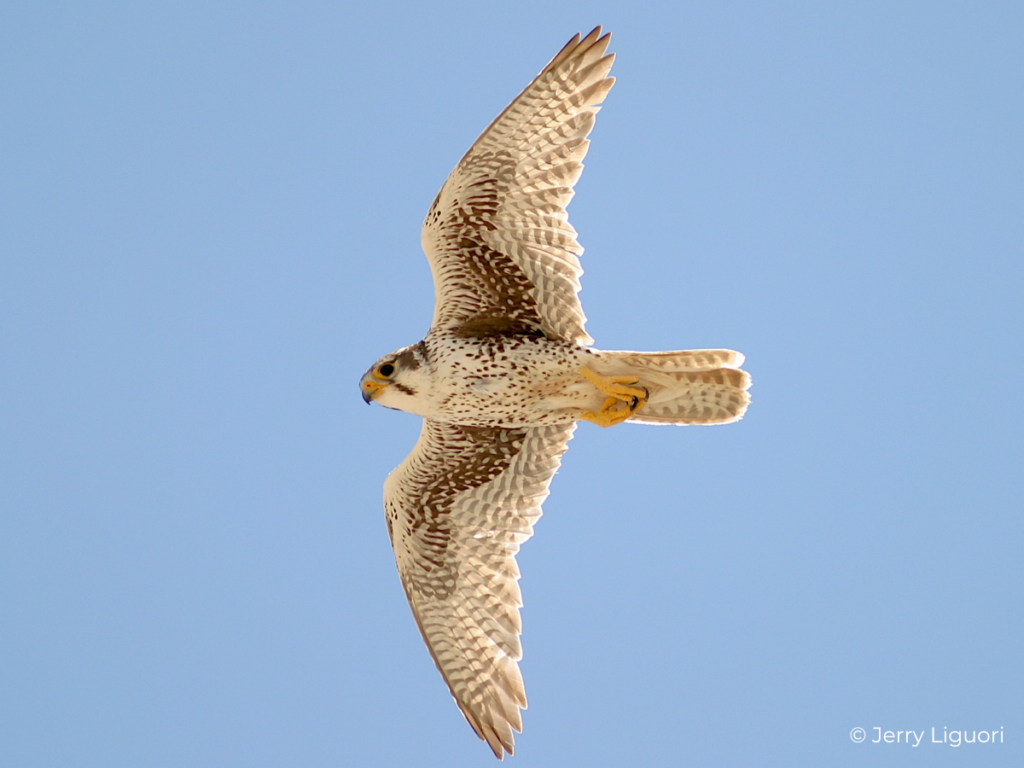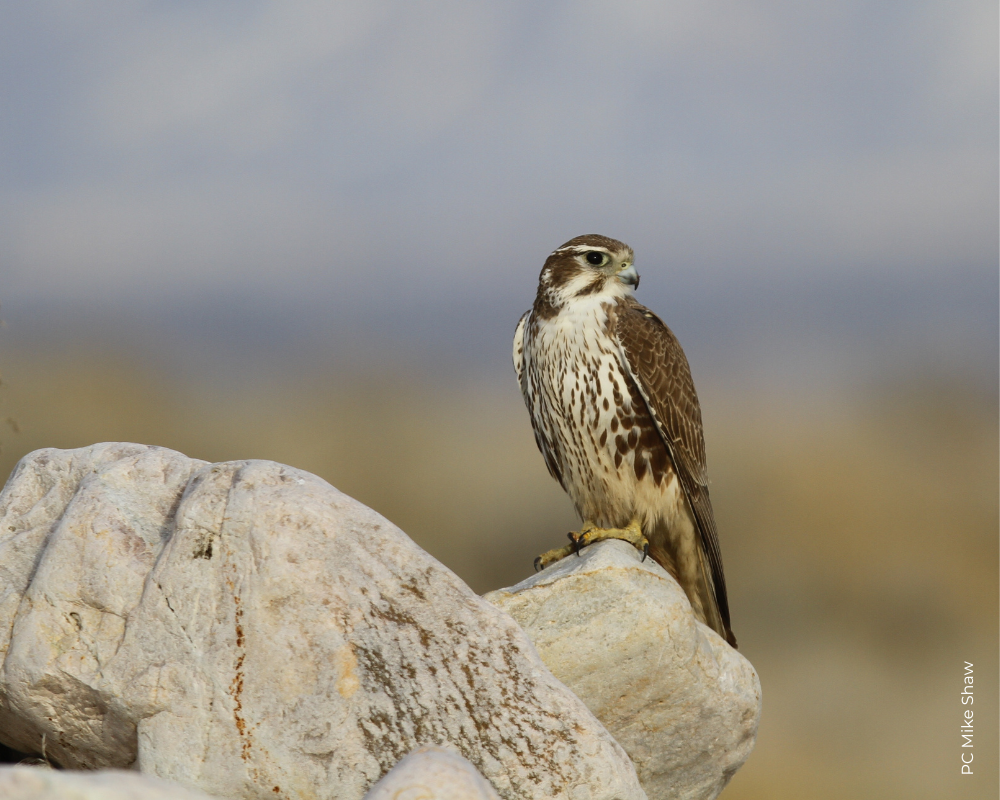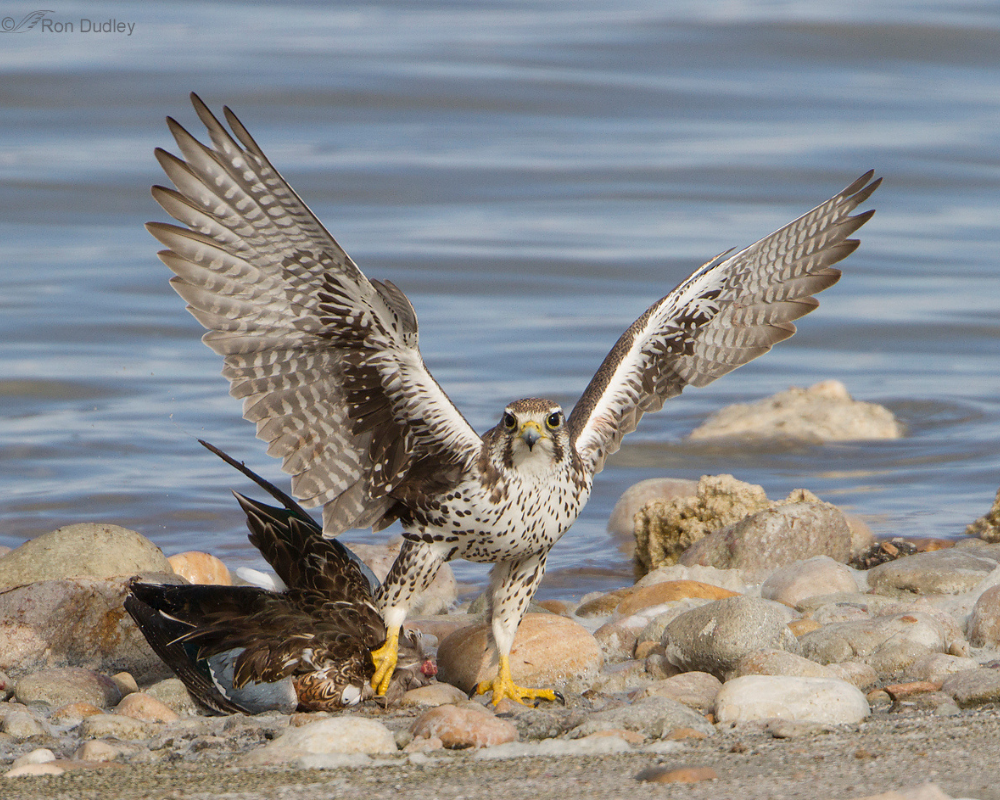Overview
Prairie Falcons are solitary birds of western open country, nesting in cavities on cliffs along rocky canyons, buttes, and outcrops. During winter, they are more widely spread across the West, even in suburban areas with ample open space. Unlike the similar Peregrine Falcon, Prairie hunts primarily ground squirrels during summer, which are captured through low, surprise attack flight, as well as by perch hunting. In certain areas, Prairie Falcons eat birds such as meadowlarks, Horned Larks, and pipits equally as often or more so as small mammals. Throughout winter, Prairie Falcons catch their own food but also steal food from Harriers, Rough-leggeds, and other raptors.
Prairie Falcons are relatively uncommon throughout the West and northern Mexico and rare to exceptionally rare in the East. A few birds make it to the Great Lakes region during fall and winter every few years, but it is generally a rarity anywhere east of the Great Plains. Prairie is lesser revered than Peregrine, but it is nearly as impressive in flight and is more than capable of super high-speed stoops and aggressive nest defenses. Their call is very similar to Peregrine’s, but a slightly higher pitched “kak-kak-kak-kak…” Females are larger than males.




